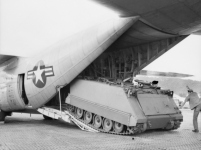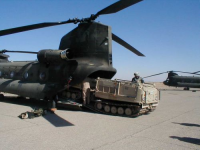For major capital acquisitions - given the size of the CF budget - looking at jumping on NATO country (okay the US And Uk only really) programs would offer a lot of savings -- but probably won't fly because it isn't Quebec related spending spree
I love drones - but a UAV isn't a replacement for an AH, even if you stick a CANSOF guy in with the drone 'pilot' to help interpret the ground - you do not get the same SA as being in the area - and AH can do very close support missions.
Oh I completely agree. But the Canadian public have to be some of the dumbest, most out of touch, unrealistic, “woke” societies on Earth when it comes to military matters.
Buying an attack helicopter won’t fly. Look at all the fuss to be had just over deploying Griffons…
An armed recce helicopter on the other hand?



(Call it a recce helicopter that can be used to scan for enemy forces that may want to attack innocent civilians, and the weapons are purely to protect civilians from the bad guys. Boom, all of a sudden the public either supports or is indifferent to the purchase just by what we call it...

)
I don’t remember the exact details of the Leo2 purchase, but I do remember some of them were acquired for dirt cheap as part of the deal we negotiated. ($100,000 is cheaper than what we paid for each G-Wagon.)
In my opinion it WAS the better option than going with the all LAV force as Hillier had mentioned, which included the 105mm MGS. Their thinking was ‘the tank is dead’ - thankfully the Leo2 came into the inventory when it did, as it offered protection from IEDs that the LAV simply couldn’t.
Does it make sense to keep them moving forwards? Debatable. But they did very much prove their worth at the time. (I believe it was just the USMC, the Dutch, and the CAF that deployed tanks to southern Afghanistan.)
Like FJAG said, those thick reinforced mud walls were tough as hell. Small arms weren’t getting through, and the 25mm would blast away through them in short order. A 120mm (??) round just took the party to a whole new level...time to recalculate what arc one is covering.
Would a fleet of standardized MBTs be nice to have, and fulfill a useful role given enough time to deploy? Absolutely.
Is it realistic for the CAF to deploy more than a dozen or two of them to an operation, even with a few weeks to a month notice? As currently set up, no. Sending MBTs across the pond would be much more efficiently done via ship than airplane, but even then they wouldn't be arriving quickly. They would also be arriving to reinforce a continent where most NATO countries have decent sized tank fleets.
Given the discussion about reorganizing the Army to make better use of the LAVs, or getting more capable LIBs - at the end of the day, it boils down to using our limited budgets wisely. Is having a fleet of tanks we won't ever deploy worth the cost of maintenance/upkeep, as a G7 country
should have tanks? Or can we tangibly put that money elsewhere, and be more useful to a coalition deployment?






